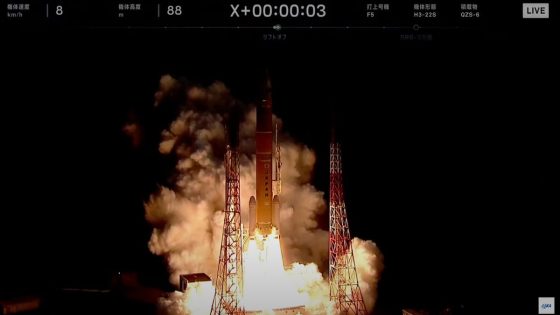Japan successfully launched its first navigation satellite of 2025, the Michibiki 6, early Sunday morning, February 2, from the Tanegashima Space Center. The H3 rocket lifted off at 3:30 a.m. EST (0830 GMT; 5:30 p.m. local Japan time) and placed the satellite into geostationary transfer orbit 29 minutes after launch.
- Japan's first satellite launch of 2025
- Michibiki 6 launched from Tanegashima Space Center
- H3 rocket successfully reached geostationary orbit
- Part of Japan's Quasi-Zenith Satellite System
- QZSS enhances GPS compatibility in Asia-Oceania
- H3 rocket's fifth flight after initial failure
The Michibiki 6 will join Japan’s Quasi-Zenith Satellite System (QZSS) after completing its checkout phase, enhancing satellite positioning services in Japan and the Asia-Oceania region.
The Michibiki 6 satellite is a significant addition to Japan’s space capabilities, marking the fifth satellite in the Quasi-Zenith Satellite System (QZSS), which has been operational since November 2018. The QZSS is designed to work in conjunction with GPS satellites, providing improved positioning services, especially in urban areas where satellite signals may be obstructed.
Key details of the launch include:
- Launch vehicle: H3 rocket
- Launch weight of Michibiki 6: 10,800 pounds (4,900 kilograms)
- Launch site: Tanegashima Space Center
- Time of launch: 3:30 a.m. EST (5:30 p.m. local Japan time)
After its launch, the Michibiki 6 will undergo a series of checks before it becomes fully operational. The satellite’s capabilities are expected to extend beyond Japan, benefiting countries in the Asia-Oceania region, thereby enhancing navigation and positioning services across a wider area.
The successful launch of the Michibiki 6 is a positive development for Japan’s space program, particularly following the H3 rocket’s previous challenges. With this mission, Japan continues to advance its satellite technology and expand its role in global navigation systems.
































